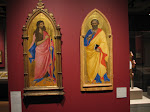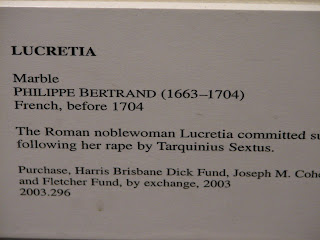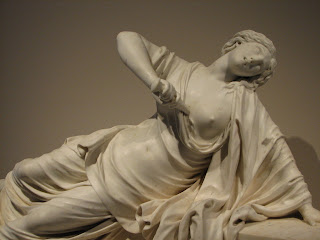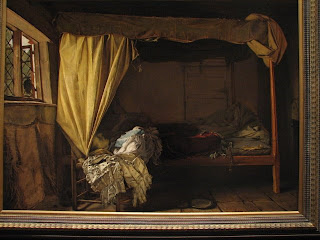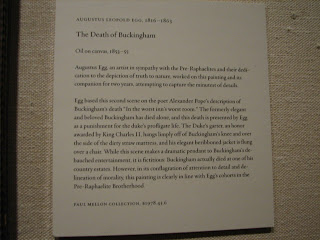



Angela Thigpen
New Britain Museum of Art
Romare H. Bearden - Early Morning
Photo Montage
Romare Howard Bearden was born in 1911 in North Carolina and was a well rounded individual, as well as a very versatile artist who enjoyed music, performing arts and world art. He was devoted to supporting younger upcoming artists. Bearden studied art at the Art Students League in New York and also at the Sorbonne in Paris. Bearden was also a well respected spokesman of art and social issues, and was the first director of the Harlem Cultural Council; an organization established for the advocacy of African American Culture.
He started his career as a lead cartoonist and art editor, and was known for his sculpture, mask, and textile or photomontage art style, which is exhibited in Early Morning. The photomontage artwork depicts African American culture: the young man is shown with prominent facial features; his haircut, forehead, eyes, nose, and mouth are made of different textures. The young man is sitting at the breakfast table, while I believe his mom is in the background wearing a head wrap. Head wraps are worn by women at night to protect the hair from the cotton pillowcase fabric, as well as the hairstyle. There is an older man in the background, the father perhaps preparing for the workday. The mask and textures on the young man are evident, and makes the photo appear lifelike.
Bearden was a social activist, and spent time as a social worker, and his connection to African American culture is evident in his depiction of Early Morning within the African American culture. He also had close ties to many well know writers, musicians, and artists such as: James Baldwin, Langston Hughes, Ralph Ellison, Alvin Ailey, and Jacob Lawrence just to name a few.
Christopher Gallego
Interior with Three Rooms
Oil on Canvas
Christopher Gallego was born in New York in 1959, and holds a Fine Arts Degree. He taught painting at the United Nations Fine Art Society, and currently teaches privately in New York, New Jersey, and The Hudson Valley.
If the picture was positioned closer to the floor, I would have thought there was another room within the museum. This painting appears to be rooms within a home; the open entry way, the telephone, stool, light switch on the wall, the door to the kitchen, the table and yellow kitchen walls and kitchen windows are amazing. The lines in the hardwood floors, the woodwork, and entryway are unbelievable. The floral design on the chair and the tin can keeping the door ajar appear so real. This is pure talent, and I can only describe this as magical, or a borderline illusion. If I did not go to the museum and see this myself, I would have thought this was another section or adjoining rooms within the museum.
New Britain Museum of Art
Romare H. Bearden - Early Morning
Photo Montage
Romare Howard Bearden was born in 1911 in North Carolina and was a well rounded individual, as well as a very versatile artist who enjoyed music, performing arts and world art. He was devoted to supporting younger upcoming artists. Bearden studied art at the Art Students League in New York and also at the Sorbonne in Paris. Bearden was also a well respected spokesman of art and social issues, and was the first director of the Harlem Cultural Council; an organization established for the advocacy of African American Culture.
He started his career as a lead cartoonist and art editor, and was known for his sculpture, mask, and textile or photomontage art style, which is exhibited in Early Morning. The photomontage artwork depicts African American culture: the young man is shown with prominent facial features; his haircut, forehead, eyes, nose, and mouth are made of different textures. The young man is sitting at the breakfast table, while I believe his mom is in the background wearing a head wrap. Head wraps are worn by women at night to protect the hair from the cotton pillowcase fabric, as well as the hairstyle. There is an older man in the background, the father perhaps preparing for the workday. The mask and textures on the young man are evident, and makes the photo appear lifelike.
Bearden was a social activist, and spent time as a social worker, and his connection to African American culture is evident in his depiction of Early Morning within the African American culture. He also had close ties to many well know writers, musicians, and artists such as: James Baldwin, Langston Hughes, Ralph Ellison, Alvin Ailey, and Jacob Lawrence just to name a few.
Christopher Gallego
Interior with Three Rooms
Oil on Canvas
Christopher Gallego was born in New York in 1959, and holds a Fine Arts Degree. He taught painting at the United Nations Fine Art Society, and currently teaches privately in New York, New Jersey, and The Hudson Valley.
If the picture was positioned closer to the floor, I would have thought there was another room within the museum. This painting appears to be rooms within a home; the open entry way, the telephone, stool, light switch on the wall, the door to the kitchen, the table and yellow kitchen walls and kitchen windows are amazing. The lines in the hardwood floors, the woodwork, and entryway are unbelievable. The floral design on the chair and the tin can keeping the door ajar appear so real. This is pure talent, and I can only describe this as magical, or a borderline illusion. If I did not go to the museum and see this myself, I would have thought this was another section or adjoining rooms within the museum.
